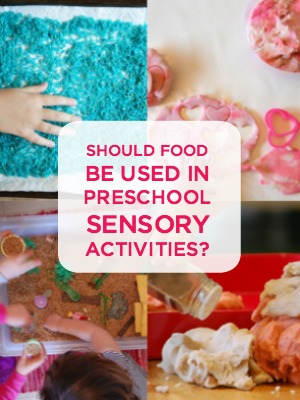 Ever since I dipped my toes into the world of Early Childhood Education, the hotly debated issue of whether or not food should be used in preschool sensory activities has come up multiple times. My background in the arts, where all supplies were fair game for art-making, didn’t prepare me for the variety of opinions that circle this topic.
Ever since I dipped my toes into the world of Early Childhood Education, the hotly debated issue of whether or not food should be used in preschool sensory activities has come up multiple times. My background in the arts, where all supplies were fair game for art-making, didn’t prepare me for the variety of opinions that circle this topic.
There are many good reasons to stay away from using food in art or sensory activities, and most of them apply to preschool classrooms and daycare centers where children of multiple backgrounds and food sensitivities will be affected.
Maybe you’re like me and haven’t thought about this much until now. I encourage you to read through the thoughtful comments in this post and come to your own conclusion.
TinkerLab reader, Pam, presented this question on Facebook after I shared a post for making colored rice:

And Pam’s question reminded me of a question from our friend, Lori, just two weeks earlier:
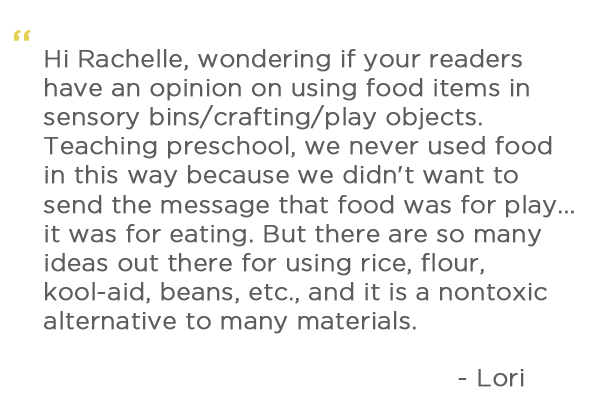
Since this question comes up a lot, I wanted to take a moment to unpack it here and share some of the pros and cons for using food in toddler and preschool sensory activities. Please keep in mind that the word “preschool” can relate to a preschool classroom setting or to the age of a preschool child who is at home. My own answer to this question (shared below) differs according to the context.
I’d love to invite you to share your thoughts on the topic, as it’s quite possible that something will be left out. My goal isn’t to convince you to take a stand in one camp or the other, but to provide you with the tools you might need to make a decision that’s right for your situation.
I pulled together some reader quotes from the aforementioned conversations and invited some blogging friends to chime in on the topic as well.
Let’s go…
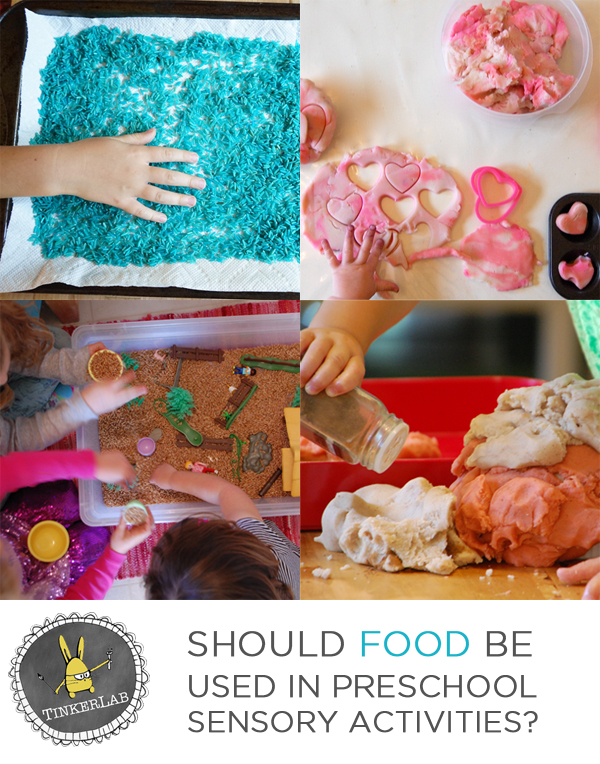
Con: Using food for Play is Insensitive and/or Wasteful
With millions of children in the world living in poverty I think it is ignorant to use food for play. Sticks, crunchy leaves, seed pod, tree slices, bark, dirt, organic sawdust, shells, small stones, sand, ice….. The list of non food, non toxic FREE play alternatives are endless. Mother Nature has provided us with all we need for sensory play. – Lee-Anne
When you fill your sensory table with rice or millet you are being playful with an amount of food that could feed a family for weeks. It teaches children that materials are abundant, and not of any great value, things that aren’t true in most of the world. In my center we use edible materials for babies but we try hard to find ways to value and honor the food that we use. – Kendra
It is not about confusing play with food you would eat, it is more like using food in play as though it were nothing, when in reality in many countries out there, it is very expensive, heck, 1 play bin could feed a family of four for 2 meals in our own country. We do not realize how much other people struggle and it is seen as wasteful. It was mentioned on my blog how many USA bloggers treat rice and beans and lentils and the like as nothing, but in many other areas those things are expensive. Not just underprivledged struggle either, many Americans that are there for the Armed Services find those things pricey in many areas as well…it is about being informed. – Michelle
Just know your audience. If you’re working with families facing food insecurity, seeing bins or beans or rice “wasted” can seem disrespectful. I use a lot of dried beans and dyed rice in my sensory bins, but I make sure it is ok as far as the population I’m serving first. – Sarah
Best practice means being respectful period, not just the make up of your class for one particular year. – Mary
In New Zealand we don’t use food ie dried pasta etc for play as its not Tikanga. Cultural principles around the subject. There are many many other natural resources we use to provide tactile play. -Sarah
Play with food at the table, in the context of eating, is ok, but playing with food for enjoyment sake itself is, in my view, a real first world ignorance. It could feed a family, perhaps even one in your centre, for a day and you disregard that issue with this type of play. Also, stuffing bean bags with dried beans, rice or other such food, is not a good idea either, for the same reasons. Many cultures keep food sacred, separate from all other activities, and with good reason. I highly suggest avoiding food-play in this way. The greatest food play is getting even the youngest of children to help you prepare food- my 2 yr old loves to bake, peel carrots and whisk eggs. Making games of the meal is all part of learning to enjoy food. Hope this helps. Non-toxic toy alternatives are wool, cotton, wood, and flax, not food. – Tota
Oh my….Food needs to be respected- not played with! Let us try as an early childhood community to raise children on the concept of respecting food, where it comes from and how it is vital for nutrition. – Cathie
It is a child care regulation in my state that food cannot be used in sensory tables nor art projects for the cultural and wasteful reasons others have mentioned. – Genuine
Pro: Using Food for Play is not Insensitive or Wasteful
It’s funny how being respectful of food with children comes up frequently, yet the biggest challenge facing most of the global population is clean drinking water. We frequently use it for “play” and for washing off surfaces. Children in some areas are deprived of a good part of a school day because they walk hours to get fresh water for their families. In schools here we have “water tables” and “splash pools” full of drinkable water before it gets used. I have no problem with staples being used for food play with children. Food banks and global donations always contain a surplus of those items. Fruits and vegetables, dairy, and proteins are items to be avoided for food play with children. Anyone who is struggling financially has no problem putting macaroni or rice on the table. It is the other 3 food groups that are challenging. A lot of staple foods are thrown out because they have gone stale or not eaten. Using them for educational purposes is better than discarding them. – Alan
I prefer to use the food scraps. We have a post on vegetable scrap stamping. If the food is going into the disposal, the trash or the compost, and it presents an opportunity to learn (either by dissecting it, planting it, or doing some art with it), then it is great to use. It also affords an opportunity to have the kids in the kitchen with me while I cook, where we can do an activity together even though I’m getting chores done. – Patricia, Critters and Crayons
As a history educator, I keep in mind that food items often were and are still used in play and art all over. Consider, too, that the bag of rice you buy in your developed world grocery store won’t otherwise be going to someone living in hunger l. Global hunger is less due to a food shortage than to war, lack of infrastructure, and a political failure of will. Rather than take stand on a particular type of material, I focus on being mindful of the effects of our choices and the ways in which we can further social justice. – Candace, Naturally Educational
I used a bunch of old macaroni that was stale for a sensory bin for my toddlers. Seeing as it isn’t cooked, it’s hard to recognize as “food” and I would rather use it in some way than throw it away because it never got eaten. Plus, my 2 year old tends to put everything in his mouth and I would much rather him end up with a stale piece of macaroni than sand or beads. – Christina
I don’t agree that using food in a different way is “wasting”. It’s being used, meaningfully and with great purpose. Are kids wasting finger paint? No they are using it. They are learning with it. It is valuable. I appreciate the need to be sensitive to families both socio economically and culturally but I reject the idea that use is waste. – Kawai
We enjoy using food for our crafts and sensory play. I do understand that it may be seen as a luxury to be so wasteful with food – but then surely having a huge variety of paper, handfuls of crayons and pens and many many more craft materials could be considered a luxury too? This may be a little black and white for some, but if I can afford to buy a pack of marker pens for $5, then I can also afford $1 for a bag of rice. – George, Craftulate
We use rice in our sensory table because we have yet to find something that feels as wonderful. We’ve been using the same container of rice (we rotate) for two years now. We are not being wasteful with it and have found the benefits to be wonderful. – Melanie
In regards to the food “waste” issue, I would argue that food is not being wasted, just used in an alternative way. Is the food being digested and giving the body nutrients? No. But is playing with food stimulating my child’s nervous system in ways that non-food sensory play can’t? Yes. And in the long run, we’ll be “wasting” much less food because my child will now eat the food we played with, rather than refusing it every time it’s presented on a plate. – –Jordan, Motherhood and Other Adventures
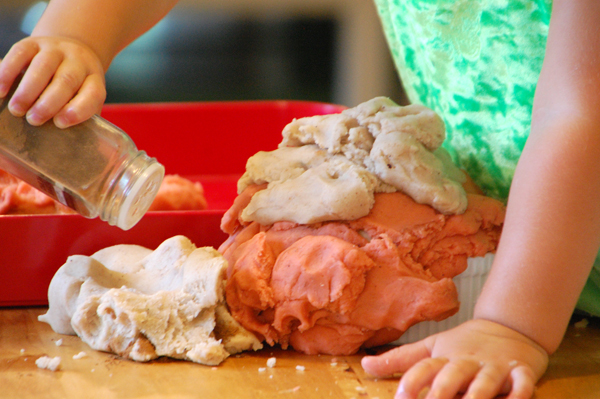
Con: Preschool Kids May be Allergic to Sensory Activities
Also a consideration is food allergies or intolerances that may crop up in the classroom. It’s hard to have to make changes to the curriculum year to year to safely accommodate everyone so if you can come up with non food alternatives that may be best. – Lissa
My daughter had a dairy allergy when she was a preschooler. It was brutal worrying about every potential craft or activity being something that could harm her. I’m grateful she outgrew it, but I remember those anxiety filled days well. – Melinda
As a parent of children with food intolerances, I dread any food-based activities at school. Especially at preschool with my toddler, who is more likely to jam things into her mouth. In fact, when my oldest was a toddler, she viewed the sensory table as her own personal all-you-can-eat buffet. (This was before I knew how those ingredients affected her.) As a parent, I either have to hope the teacher can exclude my child from any activities involving foods she’s intolerant to if there’s a risk of ingestion, or else I as the parent have to provide enough of a safe alternative for the class to use instead. Which can quickly become an expensive burden! I do see the value of food-play, and it’s a safe way for littler ones to have sensory play without fear of choking. It’s also a great way to raise adventurous eaters, by having them interact with ingredients in multiple ways (taste, touch, smell, etc,) and by using familiar foods in different ways (a lot of kids get stuck in a rut where a food must be served the same way every time!) So as long as the teacher/school is willing to accommodate food allergies and intolerances, then I’m all for food play at school! But if a child is constantly put at risk or must be excluded from an activity, then that class may have to miss out on food activities. –Kendra, Biting the Hand that Feeds You
Pro: It’s fine if Children have no Allergies
As long as there are no food allergy issues, I’d say go for it. Kids will play with food no matter what. – Teri
I have children that put everything in their mouths. Using food made more sense than anything else because it wasn’t going to be toxic if they ate it. It also wouldn’t leave trace on their hands and was easily replenished. We reuse the food as much as possible. I have a cupboard with jars of various food used in arts and crafts and play that gets brought out again and again. –Cerys, Rainy Day Mum
Pro: It’s Helpful to Children with Sensory Needs
As a mom of a child with Sensory Processing Disorder, yes, food should definitely be used in toddler and preschool sensory activities. Presenting a child with food to play with, instead of eat, is a way to introduce new textures and smells without pressure. The child is allowed to explore at their own pace, and in their own way. My son never was willing to taste pasta until after we explored cooked spaghetti in a sensory play activity. –Jordan, Motherhood and Other Adventures
My son had sensory integration issues and was only 14 lbs at 1 year. He was on a feeding tube and went to OT. At OT, do you know what they did? Play with food!. It actually teaches them to get used to different textures and not have an aversion to new foods. I was born during the Vietnam War and there was mass starvation when the war ended due to collectivization of the farms and bombings. I personally had to get over food hoarding and being a member of the clean plate club. Like everything, moderation is the key. Be respectful and don’t throw the rice around, keep it in the container and try to reuse it afterwards (make bean bags, make maracas, stress balls in balloons, heating pads, I Spy bags, rainsticks, etc.). – Lucy
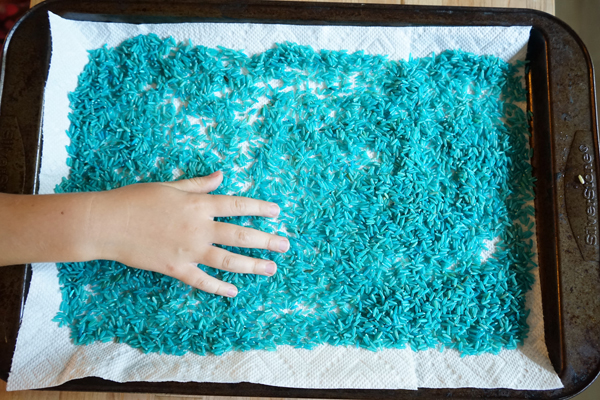
Con: Natural Objects should be left in their Environment
Would like to just throw out there that it seems many who have big concerns about food play are suggesting the alternative is to simply gather items from nature instead, and that idea is grand but should be approached with consideration to the natural world versus ”free for the taking”. If everyone heads outdoors to gather up sticks, twigs, pinecones, seeds, flowers, bark, etc. then you’ve now taken food and shelter from animals who depend on us leaving these things be. Absolutely, there are responsible ways to acquire some natural items within reason; e.g, from your own property, but typically most educational sites and resources do not promote this, they simply put in their lesson plans ”gather up some pinecones and make this glittery craft” or ”swoop up flowers from a nearby field to dissect or learn fractions”, etc. Squirrels and Bees would suggest perhaps growing your own flowers and pick one pinecone vs. a plethora, especially if it so happens to be a weak year of natural food. I know where we live is scarce this year due to rain last year and the bears and wildlife are hungry searching for what they can. As well, some natural found items are federally protected resources that can land you in big trouble for taking. So it really seems that providing any materials to children to play has a plus and a negative aspect to it. Perhaps looking at it altogether differently is an alternative. For example, children digging and growing a small garden themselves gives sensory experience whilst building an appreciation for food, as well as not taking food from wildlife to play with. Picking and Washing the veggies also are hands on sensory experiences. Eating and preserving most whilst using a few in crafts and games much like ancient cultures did. For example, making apple heads or bobbing for apples, creating corn dollies or even corn husk dolls. Or maybe gather natural items at a time of year they are not so crucial to wildlife and then returning them when needed (fall/winter). Another alternate idea from food; either human or animal, is building up a recycling/repurposing inventory. Milk jug tops, empty cartons, squeeze bottles, jars, cans, etc. These can be turned in to fantastic toys and play items. – Missy Louise
Pro: Food is Natural and Healthy
I used to have a problem with it, but now I think it´s better than buying other toys/playdough etc. We reuse the dried food/homemade playdough over and over. From an environmental view I actually think it´s better than a lot of plastic, battery operated and general toys as they are often made with nasty chemicals, break and may end up in landfill. So I would much prefer to be letting them play with dried foods that will decompose! Kids naturally play with food at the table when they eat and I actually think it´s important to do this so that they can experience the food you are expecting them to put in their mouths. In saying all of this rice, flour and beans are about all we use (easy to store and re-use). At Christmas/easter time the odd potato for stamping. – Felicity
I have to say I lie in the pro-food camp. For me the benefits of using food in preschool activities outweigh the cons. I personally like using food because it is a less expensive alternative to many costly art supplies, because it encourages children to see unique ways to use everyday items, and because it makes for safe, non-toxic play materials. – Ana, Babble Dabble Do
I understand the concern but do you want your children to play or accidentally ingest toxins??? I would much rather use rice or flour than something that would harm their growth, remember this is used as a learning tool and something to keep in mind using toxins what message is that sending? I am all for organic but we must understand there is a down side to this usage also. – Robin
My girls are 3 and they know not to play with food at meal time. They constantly do food play at school and home…..I would rather them eat a Cheerios than a plastic bead. If they are taught to understand (which they can do at preschool age) it shouldn’t be an issue. – Jessica
You could have food on plates that could be played with then eaten. You could use beans for play then plant them. I’d much prefer kids playing with biodegradable products than something that’s going to end up in the bin like the loom bands everyone has gone mad for. I think in the scheme, of things a bag of rice is fine for play, perhaps playing with food might bring children closer to understanding and appreciating it. I’ve made veggie critters with kids and it’s a wonderful activity. – Kristy
If we are not “pro-food” in sensory play, then what are we? Unless you’re only then reaching for natural materials, the alternative is synthetic, manufactured items that cause their own environmental footprint and sense of “disposable” waste. If properly cared for, food sensory items can be reused again and again — the same bag of quick oats, the same batch of homemade playdough.
Food provides unparalleled, multi-sensory engagement and is something that most people reading will have ready access to.
Also, if the concern is having children “play with their food,” I would suggest that allowing this might encourage children to be more adventurous with their food choices. Even painting with spices might encourage a plain-eater to try something a bit spiced up! – Jennifer, Study at Home Mama
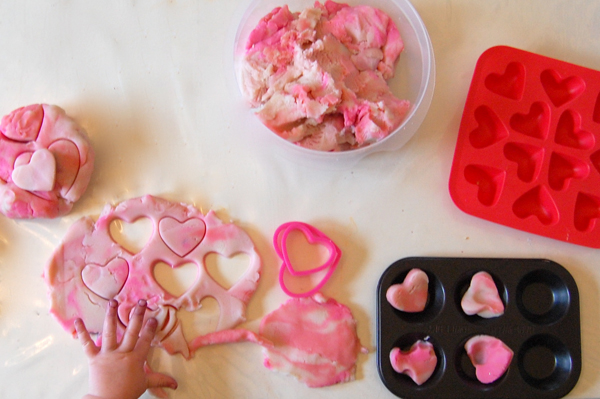
Take the Middle Ground
Gather materials from nature for your sensory bins. Rocks, pebbles, sticks, fresh cut herbs, dried plants, mud, etc! It’s free, teaches about our local environment, and can be returned outdoors or composted. Personally, I use limited amounts of food materials. Winter wheat berries that we then give to a farmer is great in the fall. Talk about wheats life cycle, read “little red hen”, sprout wheat, talk about wheat to flour, bake some bread. All in balance friends. No sense judging one another’s practices! – April
Really, it’s about the balance and respect for other cultures. I do use food, even as a sensory but in the context of teaching my preschoolers about cooking and nutrition. Giving them the independence to learn how to make something and then do it at home is the best lesson I can teach them. They still get to “play” / “create” with food but in a more appropriate context that they will remember and use. – Cathryn
I personally aim to think carefully about any materials we use in play. I want my children to have access to a wide range of materials for sensory experiences and creative prompts, and prefer open-ended, natural materials. We try not to use anything which is disposable after only one brief use, we use as many recycled materials as possible, and we try to recycle or compost what we’ve used after we have played. Using this criteria sometimes food is a better choice for us – for example some uncooked pasta which we might use as maths manipulatives, put in a sensory tub, and then paint and use for art, or threading necklaces. We use it many times before composting it to benefit our garden classroom. – Cathy, NurtureStore
I probably think way too much about this topic. I do agree that for some young children using food is a safe alternative – if they tend to put things in their mouths (my son says I’m the most over-protective mother). Several years ago when teaching art at a preschool in a poor neighborhood it struck me as very sad that many o the children only ate when they got their free breakfasts and lunches at school. I imagined how one of those children would feel seeing pudding used to paint or an apple used to print. I stopped using food in my projects. I’ve since started again, but not in the same ways. I’ll use items I would normally toss (like strawberry tops) or I do a swap- I’ll have my son choose an items to donate to the food pantry box at our grocery store if we are going to use food in an activity. I know that the five blueberries I’m going to use or a printing project won’t cause a world hunger crisis, but it makes me feel better and teaches a good lesson on helping others to do so. I explain it a little better in this post on berry art. – Rikki, Mini Monets and Mommies

Where does TinkerLab stand?
As I mentioned earlier, my background in the arts prepared me to think abstractly and broadly about what can be used as an art material. When I set up my first art studio, Chris Ofili’s paintings with elephant dung and Damien Hirst’s real shark floating in formaldehyde took the art world by storm, demonstrating just how far artists can push past the use of traditional art supplies. I happily made things with non-art materials like Valentine conversation hearts, resin (which comes from trees), and flowers collected from my garden. Wasn’t this better, and maybe more interesting, I thought, than spending tons of money on store-bought supplies?
Now here’s an interesting fact about store-bought art supplies: Food and natural materials are often in the ingredients. This is something to think about if you have a child with food allergies. For example: Play-doh (flour, salt), Crayola Colored Pencils (soy), Air-dry Clay (corn starch), and Crayola Washable Markers (corn syrup). If we’re to avoid food products in art then we need to consider these less obvious culprits. These ingredients aren’t included in package labels and are essentially hidden from consumers. Since food products are found in store-bought art supplies, I see very little difference in adding food to my own supplies.
Introducing my kids to natural materials is also far more interesting to me that exposing them to toxic materials. As such, we will occasionally use food for play or projects, and I’m more inclined to do so if it’s scraps, expired, or if the play/art supply will last for a long time. We do our best to recycle and return things to the earth. Some of the things we have used and made: flour and oil in cloud dough, rice flour in gluten-free cloud dough, rice in colored rice, flour in the best play dough recipe, wheat berries in our wheat berry sensory table, and sweetened condensed milk in milk paint.
Food for Play in schools: I don’t run a school, but in that context there’s a good chance that I would avoid using food for play due to allergies and a desire to respect the religious and personal perspectives of a diverse audience. When it comes to the school environment, I often look to my colleague, Deborah, at Teach Preschool. See the first article, below.
More thoughts on Food in Play
A Discussion on Food Use in the Early Education Classroom, Teach Preschool
Parents and Teachers Working Together: Should Food Be Used as Learning Materials, Early Childhood News (the discussion in the this article is so rich and will give you a lot of food for thought — no pun intended!)
Play with your food? Or not? My thoughts on Food in Play, Picklebums
Being Thankful for Food, Planet Smarty Pants
Using Food in Preschool, Interaction Imagination



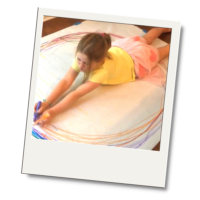
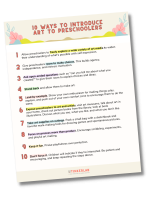
What an amazing and though-provoking post, Rachelle! Thank you for including our thoughts on food here. I have learned a great deal about other perspectives through this post alone. Wonderful and insightful!
Thank you, Tricia! Gathering all of these perspectives together in one place has been hugely informative to me too. I’m constantly humbled by how little I know.
This is a great article Rachelle and such a hot button with a wide range of perspectives and opinions. I don’t think one can stand firmly on either end of the spectrum and get it completely right but it is very good to be informed so that one understands the choices made by others and is more thoughtful in their own decision-making. In the end, I believe that when it comes to early learning, the best form of research – enlightenment – creativity – engagement – knowledge – compassion – and meaningful understanding about the child’s world and the things in the child’s world – is through play.
Thanks, Deborah! I’m so happy to have your reasonable voice in this conversation. The more I think about it, the harder it is to take a firm stand. As parents, we can take a position for our own children, but educators have to think much more broadly about the bigger picture and the various positions of the families in their care.
Thank you, Rachelle, for such a thoughtful, and varied, response to my question. I was especially intrigued by the mention of the way water is used in the classroom and how scarce it is in some countries- and frankly- in our own USA- right now. I’m so glad I found you, bought your book, and continue to follow your insightful postings. Do you do any PD for teachers in the SF Bay area? If so I would love to explore it with you for my teachers.
You’re welcome, Pam, and thank you for planting the idea in my mind! It’s been a while since I’ve done PD, but I would definitely consider it. I love working with teachers!! You can reach me at Rachelle at TinkerLab dot com.
My initial thought is I have not thought about this! I think the arguments presented have merit, from con to pro to in the middle. My school does not have a policy regarding it, and we use a extraordinary wide range of sensory materials, including some food products. From many years of experience, the children do not regard beans, rice as “food” in the traditional sense, rather by location, in the sensory table, they know it is for play. Whether is is wasteful or disrespectful, I see similar waste in restaurants (school cafeterias, really many places) all the time, and doubt a preschoolers ability to think globally in terms of starving children, their ability to use such complex thought is not yet developed. I appreciate the perspective, but with all due respect, potentially this topic is given more weight than it possibly warrants. Goodness knows that those who work with young children have so much to think and worry about:)
Hi Laura,
Thank you so much for your comment. It’s possible that this post gives a lot of weight to a small problem (of course, in the grand scheme of things this is not going to solve world hunger). However, I’ve been a teacher and have led professional development for teachers, and reflection on practice with a goal of being intentional is key in professional development. Yes, teachers have a lot to think and worry about, not only on a planning level but on a caregiving level as well, and taking time to think through these issues will help them improve their practice. If there’s a child in their care with a gluten allergy, they ought to be mindful about presenting that child with play dough. I hadn’t thought about this too much, either, and the more I dig into it, the more I understand why many schools have made the decision to not use food for play. Of course, the home environment is a whole different story! ~Rachelle
It is nice to see this being discussed and to see the different perspectives. As a parent of two kids with serious food allergies we had a very hard time. I would have loved to find preschools and elementary schools as thoughtful as these for my children. There were too many days where my child was sent to the front office because the rest of the class was doing a food play activity, other days where my little one had a serious reaction because the teacher “forgot”, and some days where I kept them home from preschool for the day because I was sick with worry after hearing about the planned activity. One of my children was so sensitive that if another child touched her with gluten-y fingers she got a rash. She missed out on many fun preschool experiences because of this and it broke my heart.
Hopefully your blog post gets more teachers thinking about this. Personally, we loved to do our own allergy safe food play at home. 🙂
Hi Valerie,
I sat in during snack time at my little one’s preschool the other day, and was so impressed with how diligent the teacher was about keeping gluten away from the table (one child had an intolerance) with very little commotion. Aside from the philosophical debate around food being used for play in schools, there’s a very real issue with children who have allergies. Bravo to the teachers who take this seriously, and hopefully this post will raise awareness amongst those who haven’t come across this issue yet in their professional experience.
Rachelle
My son had food allergies once so I totally understand how challenging this must be!
I am a firm believer in using natural materials in my sensory table/bins. I would much rather have something that came from nature than something made with chemicals. We store our materials and reuse them when possible. Or we repurpose them. We tried oatmeal this year, and when we emptied the table, my coworker and I took the leftovers home to feed to our chickens. I feel using these types of resources is more environmentally friendly than purchasing man made materials.
Well said Beth, i too think we should be using what is natural…and how is it being wasteful if food products are out of date or re used after? it is cost effective and safe play for those families that can not afford expensive replications…people really need to stop over thinking and just let kids play 🙂
Oooohhh! I love this article! There are such a wide variety of perspectives here….thanks for putting this together:)
I noticed something in many of these posts which seems to have a common theme though….
It looks as if ‘play’ was seen by many as something which was unimportant and insignificant and as such, ‘playing’ with food was ‘a insignificant way of using food’. However, I just remembered that Montessori said that ‘play is the WORK of children’ and was important for their development, learning and being. So on this premise, they are technically ‘working’ with food! And if you follow this to its natural conclusion, it will seem like children need to work with food because it is a significant part of their growth and being and as such, food has more than one use, it’s for nourishing the body and a young child’s mind;)
What a complicated topic!!! I certainly think that this is one of those topics where you just can’t please everyone all of the time. Like you, Rachelle, I was educated in a world where anything was used in the creation of art, and until recently, I never considered this to be an issue. And after reading through your well thought out post, I still find that for me, there will always be more pros than cons. And the idea that we are questioning whether or not to use food, but not questioning how we use water is likely to stick with me for a long time to come.
I had one further thought as well though – if I were to opt for store bought (supposedly non-food) play items, and pay a premium for those items, then I have less money to donate to causes that actually get food to people who are hungry. If, however, I opt to use food for play items, at what is usually a much lower price point, I have more money to use in donations to help where it is needed.
I love how you were able to incorporate so many opinions and perspectives under your headings. Thanks for including me!
You’re welcome, Jennifer!
I really appreciate that you have put together this page. It is something that I have often deliberated over for my own workshops and home projects with children, but rarely expressed. I’m glad that you have opened up the discussion for those who are working in this field or with their own children at home yet may not given it a second thought, and it is incredibly helpful to hear so many different thoughtful viewpoints on the topic.
Thank you for the work you did piecing together this discussion and presenting it to the public.
Hi Heather, I agree that a discussion like this can be so helpful to those of us who haven’t given this issue too much thought. I know that it was all new to me just a couple years ago! Warmly, Rachelle
My own thoughts are that it’s uncomfortably close to making a child clear their plate and not waste food.
There are far more urgent issues around world hunger than a group of preschoolers playing with a 45p bag of rice.
Allergies are always a consideration, but I don’t think we should stop all food play because of a child’s particular allergy – far better to work around the allergy. After all, we don’t ban bread due a child’s coelic disease, we work around it.
Thanks for your thoughtful comment, Julie.
Thank you Rachelle for a very well written article on a topic that brings forth such strong feelings and opinions. It was good to read and hear both sides of the story as such. Take care, Georgia
Thanks for your comment, Georgia. I really enjoyed pulling it together and love hearing that it’s useful to families and educators.
[…] to read about the debate of the use of food in children’s’ art and sensory play this is great article with points of view from both sides. If you would like to try this and don’t feel comfortable using food for experiments save this […]
[…] If you’d like to read pros and cons on this topic, TinkerLab has a great post about this topic – Should Food Be Used in Preschool Sensory Activities? […]